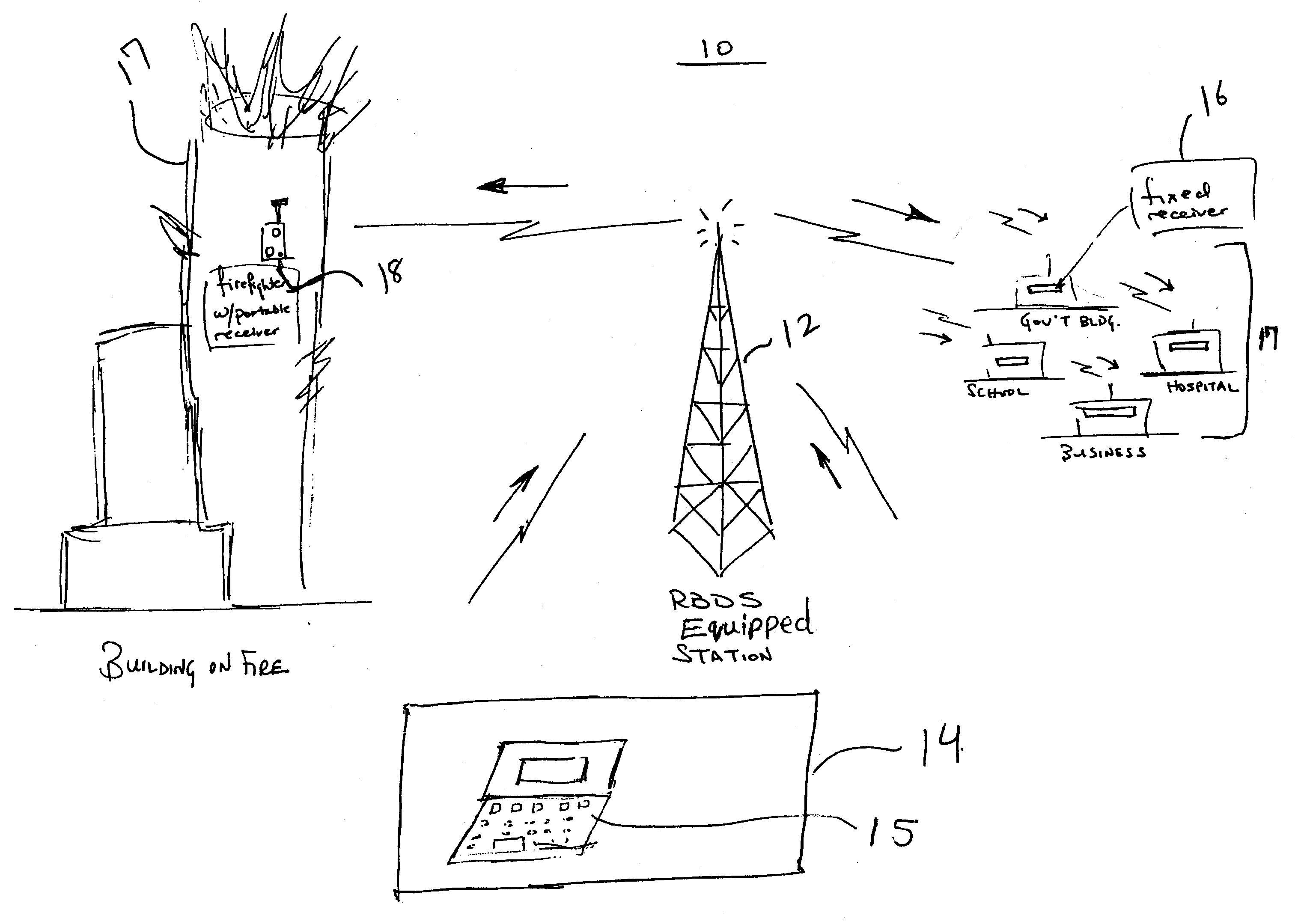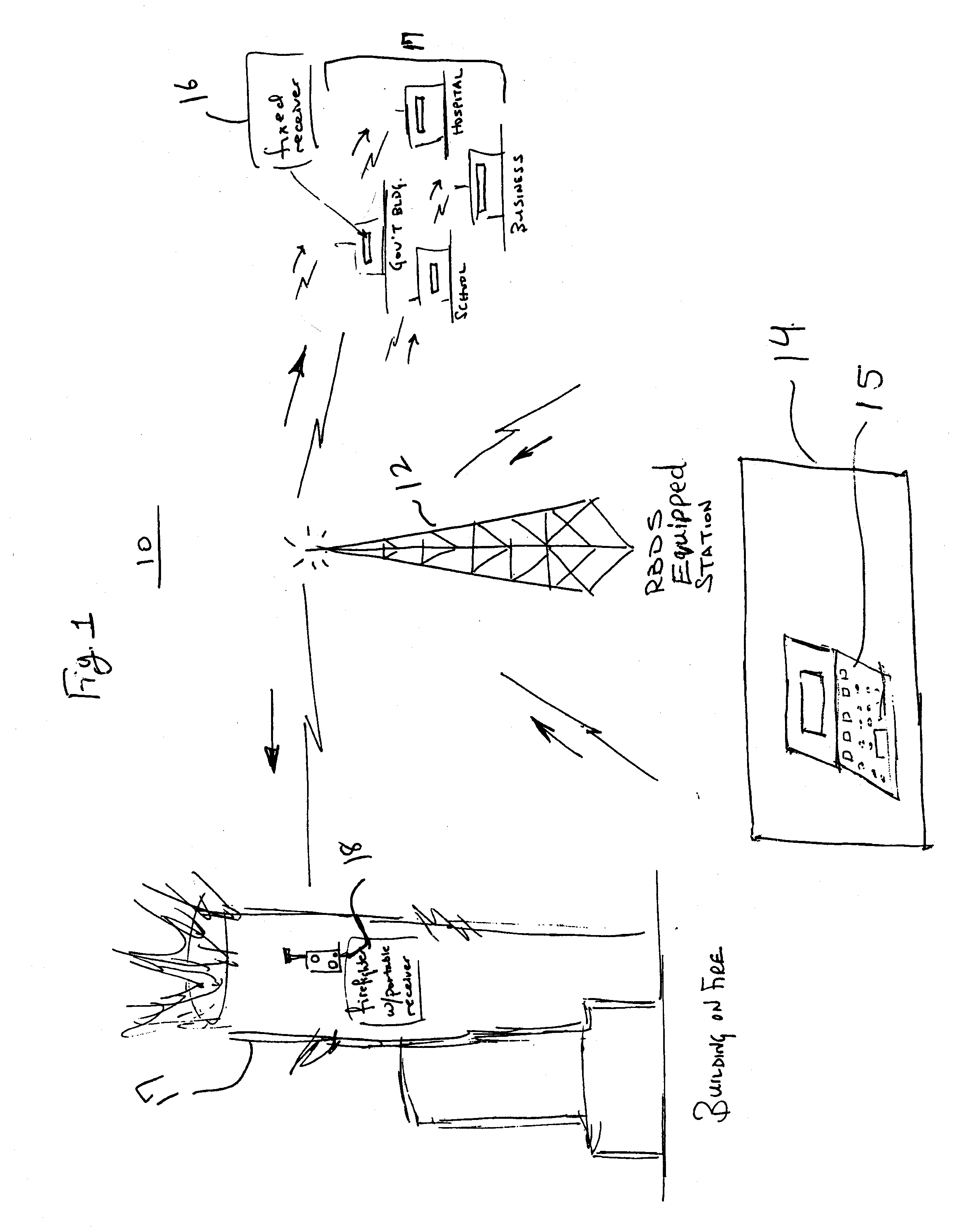Systems And Methods For Providing Emergency Notification
a technology of emergency notification and system, applied in the field of emergency communication systems, can solve the problems of many lives lost, critical but often poorly executed procedures, and extraordinary loss of li
- Summary
- Abstract
- Description
- Claims
- Application Information
AI Technical Summary
Problems solved by technology
Method used
Image
Examples
Embodiment Construction
[0022] Referring now to the drawings, FIG. 1 illustrates an exemplary network architectural system 10 for communicating emergency notification according to one embodiment of the present invention. The system 10 preferably utilizes conventional FM radio broadcasts powered adequately to service areas as licensed by the Federal Communications Commission (FCC). The frequency range for FM broadcast systems is 88-108 Mhz. The system 10 comprises a Radio Broadcasting Equipped Station 12 operable to transmit signals in both the RDS and the RBDS format as will be discussed in detail below. The system 10 further comprises an on-site command unit 14 coupled to the radio broadcasting equipped station 12 preferably via at least one back-channel data communication link. The command unit is preferably located on an emergency personnel transportation unit such as a fire chief car or police car etc; in an emergency management stations such as fire headquarters, police stations etc. or any other emer...
PUM
 Login to View More
Login to View More Abstract
Description
Claims
Application Information
 Login to View More
Login to View More - R&D
- Intellectual Property
- Life Sciences
- Materials
- Tech Scout
- Unparalleled Data Quality
- Higher Quality Content
- 60% Fewer Hallucinations
Browse by: Latest US Patents, China's latest patents, Technical Efficacy Thesaurus, Application Domain, Technology Topic, Popular Technical Reports.
© 2025 PatSnap. All rights reserved.Legal|Privacy policy|Modern Slavery Act Transparency Statement|Sitemap|About US| Contact US: help@patsnap.com



